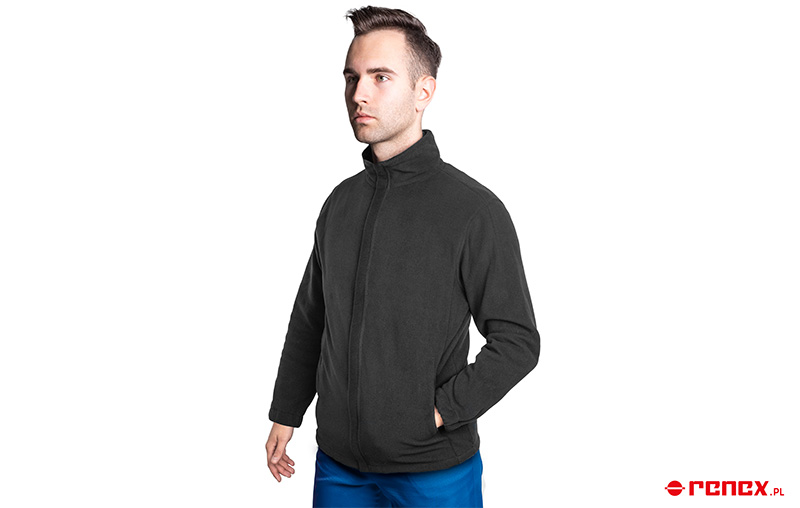RENEX Group has informed about the newest addition to the offer of REECO special clothing – the anti-electrostatic Polar Fleece.
The new REECO Antistatic Polar Fleece is made of materials containing electrically conductive elements in the form of carbon fibres. The zip has been additionally covered in accordance with the requirements. Thanks to that the polar fleece meets the standards set out in PN-EN 1149-5:2008 and can be used in explosion hazard zones.
In keeping with the standards of the entire REECO product line, the Antistatic Polar Fleece is available in the full size range from 2XS to 2XL. The model is available in black, in a universal cut: with a raised collar and two lower pockets.
RENEX Group has introduced the new product as an expansion of its existing wide range of REECO clothing. It includes specialist clothing designed for use in areas where advanced electronics are manufactured – i.e. in EPA zones – and in cleanrooms.
Applied materials meet rigorous requirements in such type of spaces. Clothing designed for EPA zones – that is anti-static or ESD clothing – does not generate electrostatic discharges that are dangerous for sensitive electronic components. Clothing designed for cleanroom zones is manufactured from materials that do not emit dust and particles into the air. This is essential when working with advanced technologies in e.g. pharmaceutical, medical or space industry.
REECO clothing lines, despite their specialized application and the materials used, are manufactured in a way to ensure the greatest possible comfort of use and a wide range of cuts and colors. At the same time, their high quality allows for long-lasting use.

In addition to clothing, RENEX Group has developed and delivers under the REECO brand a series of modern robots, specialized equipment and anti-static industrial furniture. The Polish REECO product line has been expanding to foreign markets in recent years. In 2020, RENEX Group recorded a 50% increase in exports of REECO product groups. In the same year alone, their distribution was expanded to Japan, the Netherlands, Belgium, Ireland, Switzerland, the United States, Ecuador and Saudi Arabia, among others.
